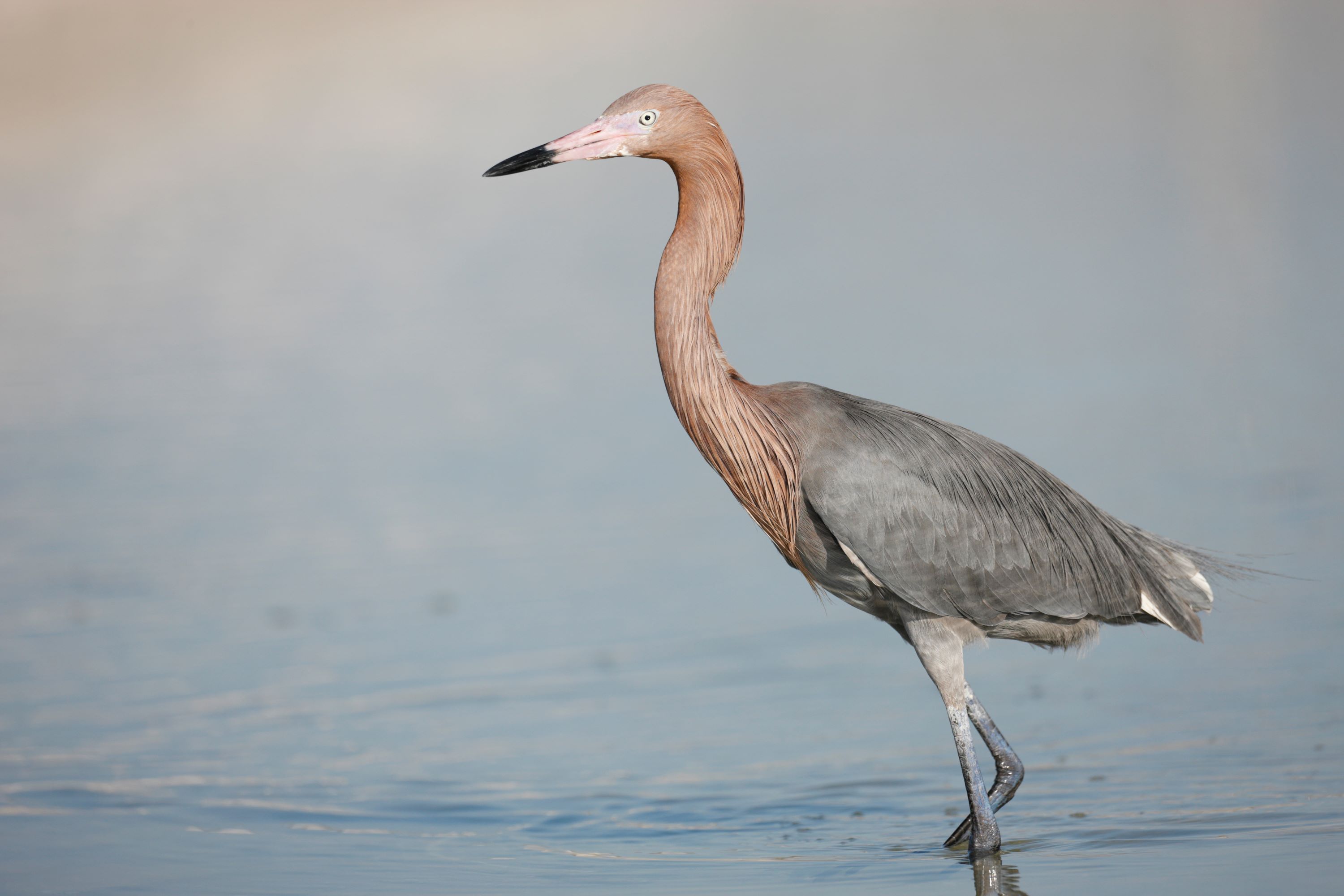
The Reddish Egret: The Dynamic Dancer of the Coastlines
Introduction to the Reddish Egret
The Reddish Egret, Egretta rufescens, stands out as one of the most distinctive and animated members of the heron family, Ardeidae. Known for its unique foraging dance and striking plumage, this egret is a captivating sight in coastal wetlands.
Physical Description
Reddish Egrets are medium-sized birds, typically measuring around 70-85 cm in length. They exhibit two color morphs – a dark morph with a slate-blue body and a reddish head and neck, and a white morph that is completely white. Both morphs have long, slender bills and legs, which aid in their agile hunting style.
Habitat and Distribution
This species is primarily found along the Gulf Coast of the United States, the coasts of Central America, the Caribbean, and northern South America. Reddish Egrets favor shallow coastal waters, salt marshes, estuaries, and lagoons, where they can be seen wading and hunting.
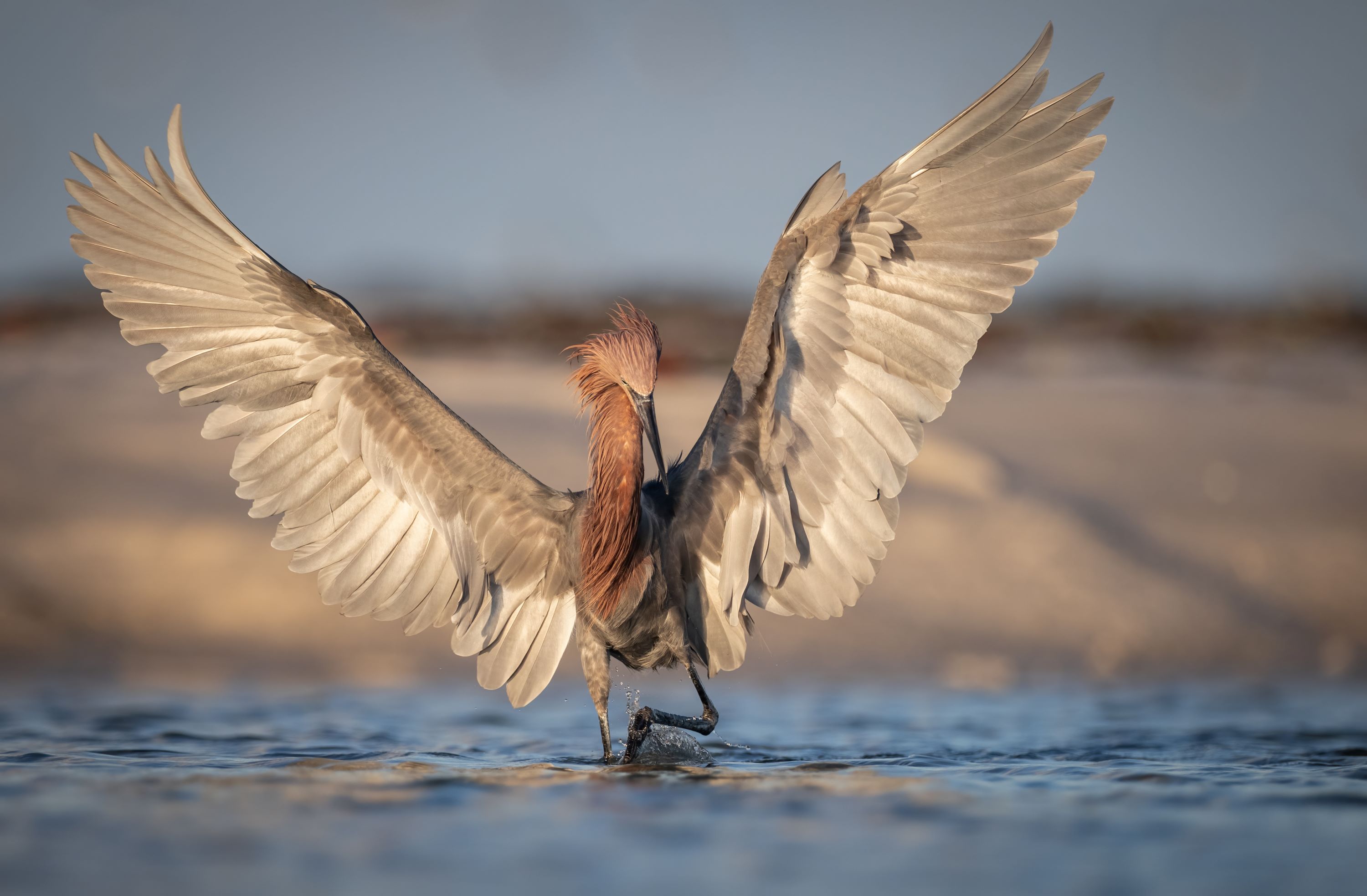
Behavior and Lifestyle
Renowned for their active foraging behavior, Reddish Egrets are often observed performing a lively, erratic dance in shallow waters to catch prey. This distinctive behavior involves running, spinning, and wing-flapping, which helps them to startle and capture fish and other aquatic prey.
Feeding Habits
Their diet mainly consists of small fish, with occasional amphibians, crustaceans, and insects. The egret’s foraging dance allows it to catch prey in deeper water than other wading birds typically can access.
Breeding and Nesting Habits
Reddish Egrets typically breed in colonies, often alongside other species of herons and egrets. They build platform nests in mangroves or shrubs close to water. The nests are made from sticks and lined with finer materials.
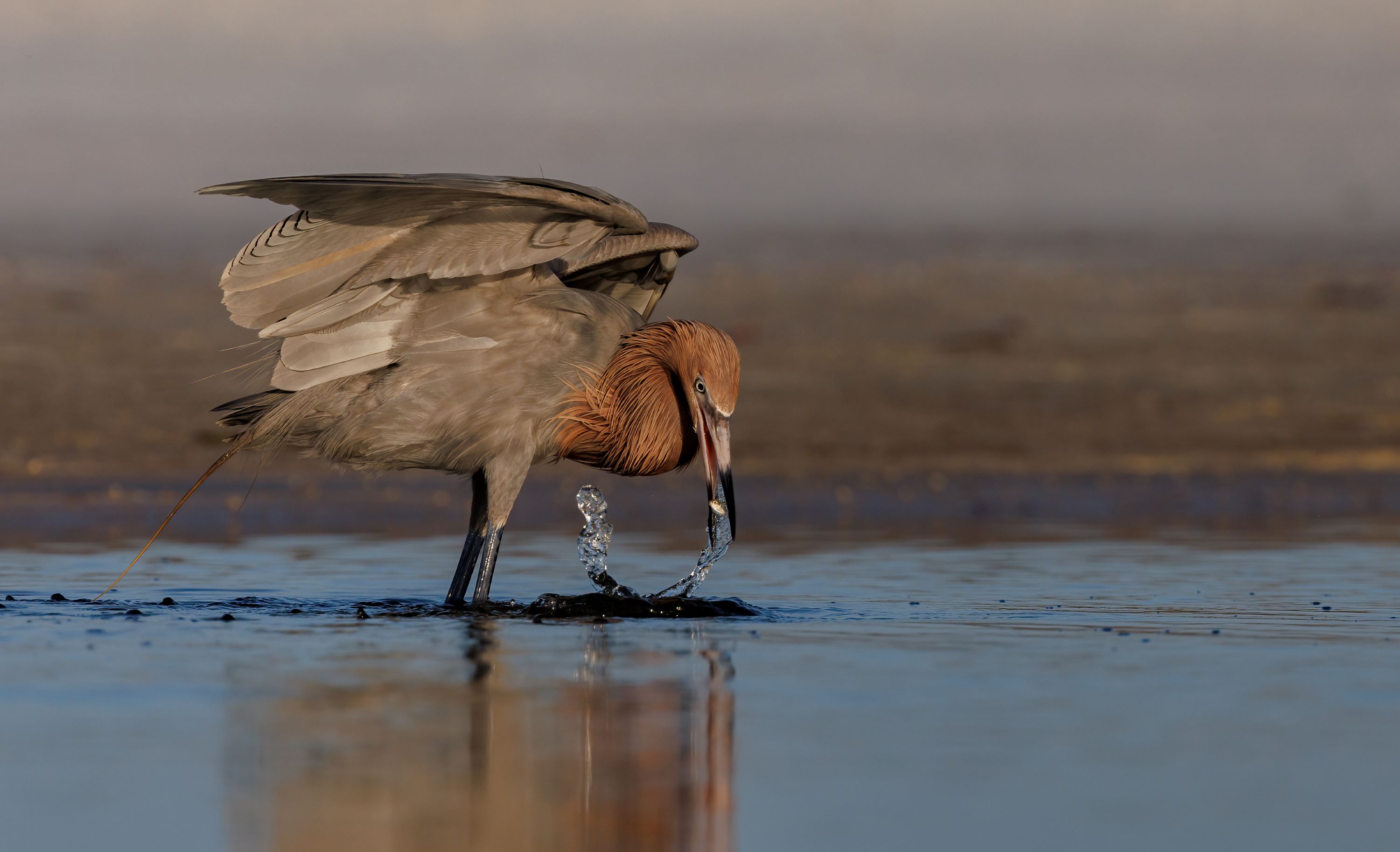
Egg Laying and Incubation
The female usually lays 3 to 4 pale blue-green eggs. Both parents share incubation duties, which last about 24 to 27 days. The secluded nature of the nesting sites helps protect the eggs and chicks from predators.
Chick Rearing and Parental Care
Chicks are born altricial and depend heavily on their parents for feeding. Both parents feed the chicks by regurgitation. The young fledge the nest at about 6 to 7 weeks old but may remain dependent on their parents for a short period thereafter.
Vocalizations and Communication
Reddish Egrets are not particularly vocal, but they do make a variety of sounds, especially during the breeding season. These include croaks and soft calls used for communication within the colony and with mates.
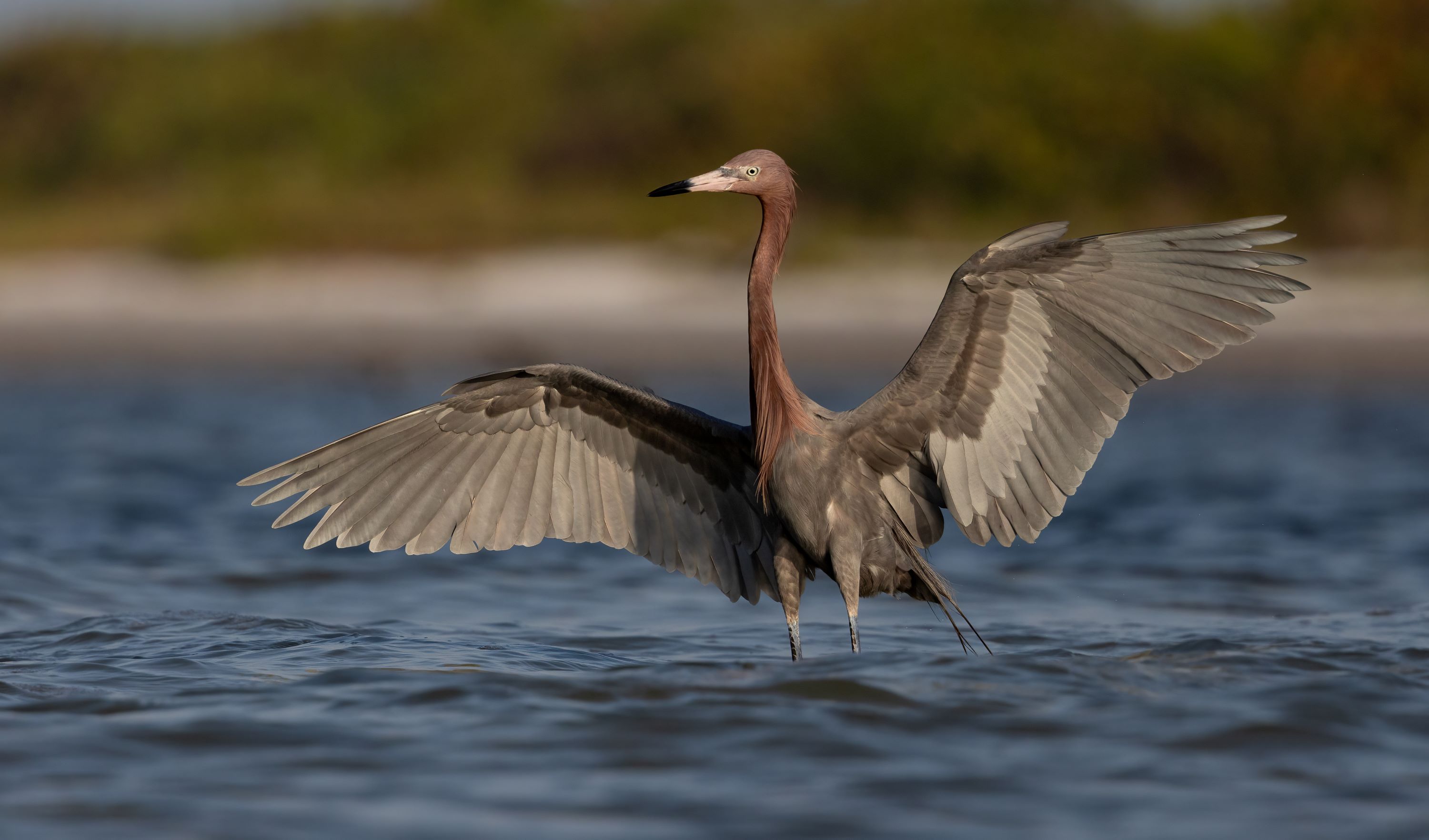
Conservation Status
The Reddish Egret is currently listed as Near Threatened by the IUCN. Its populations are vulnerable to habitat loss, particularly in coastal areas due to development and environmental changes.
Similar Species and Taxonomy
Within the Egretta genus, the Reddish Egret shares similarities with species like the Little Blue Heron and the Snowy Egret. It is distinguishable by its unique foraging behavior and the reddish coloring of the dark morph.
The Reddish Egret in Utah
The Reddish Egret is not commonly found in Utah, as its range is primarily coastal. However, rare sightings have occurred. Birdwatchers in Utah are more likely to observe other heron species in the state’s wetlands.
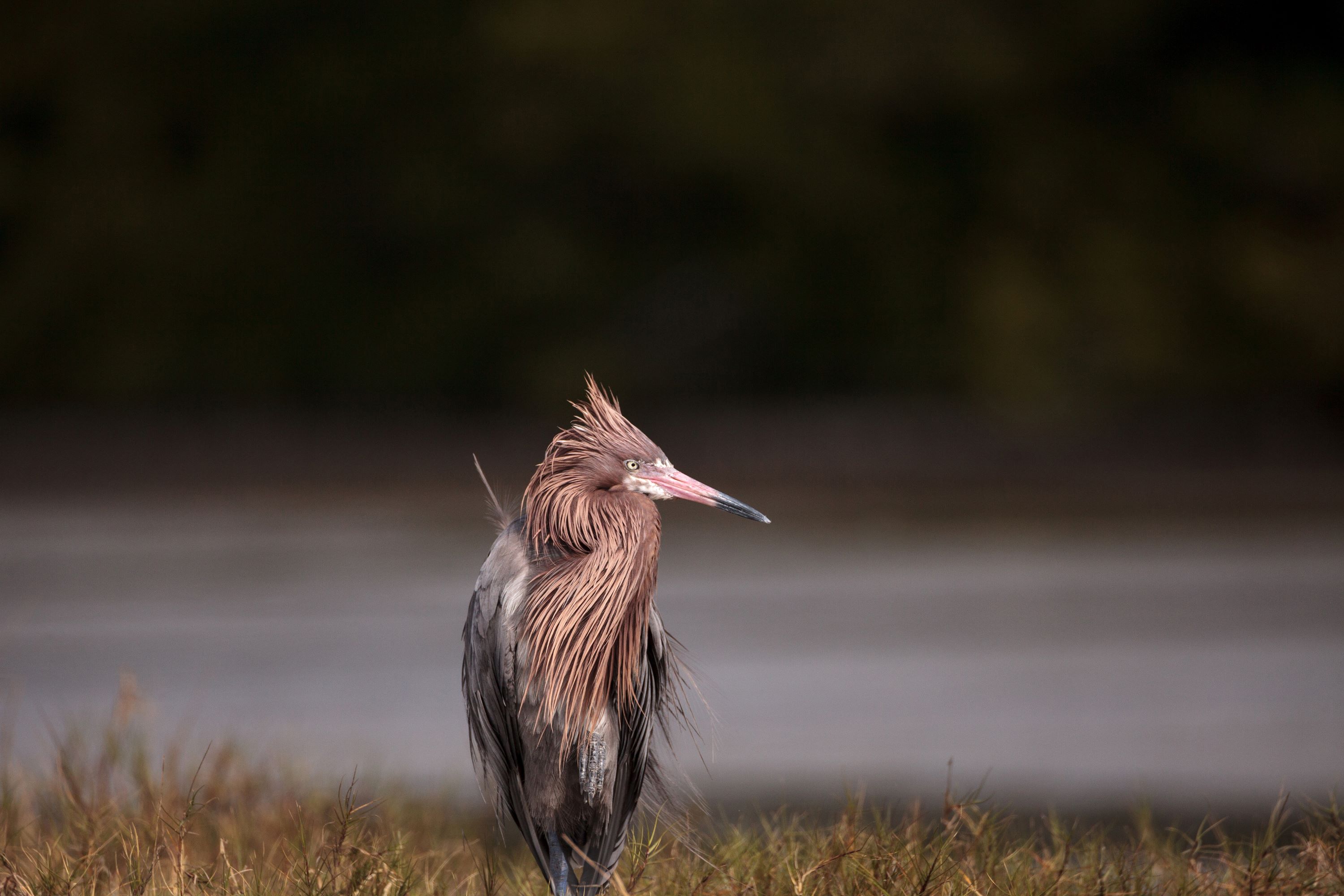
Conclusion
The Reddish Egret, Egretta rufescens, is a symbol of the dynamic life found in coastal ecosystems. Its remarkable foraging dance not only makes it a joy to observe but also highlights the importance of preserving its natural coastal habitats. Efforts to protect the wetlands and coastal areas crucial to the Reddish Egret will also benefit a wide range of other species that depend on these ecosystems.